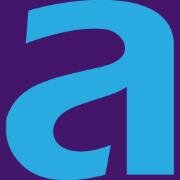Highlights from IQVIA Report on Drug Expenditure Dynamics 1995-2020
In its most recent report published on October 14, 2021, IQVIA examines statistics of drug spending in pharmacies and hospitals. It report evaluates the net discounts and rebates in the U.S. and in other countries around the world. Here are some of the key takeaways from the report.
1. Total drug spend
In 2018, total drug spend from the 11 countries studied ranges from 9-20% of total healthcare expenditures, with the U.S. spend at approximately 14%. On average, for across all countries, the average drug spend is 14% of total healthcare expenditure.(1)
Drugs as Percentage of Total Healthcare Spending: 2018
Overall, the growth of drug spend has been slower than total healthcare expenditure in the past 3 years in most countries studied.
2. New drivers of growth in drug spending
As new drugs launch every year, there are certain therapeutic areas that account for a significantly higher percentage of growth in drug expenditure. While new drugs for cholesterol and pain drove the growth between 1995 and 2005, new branded drugs in oncology, HIV and diabetes have been the key drivers in growth in recent years, especially between 2015 and 2020. Specifically, top therapeutic areas include oncology, immunology, anti-diabetics, neurology and respiratory products constitute 47% of total drug spend in 2020, an increase of 14% from 1995. (1)
3. Oncology spending
New treatment mechanisms in oncology have shown increased utilization and drug expenditure in the past 5 years. While evidence-based treatment guidelines still recognize cytotoxics and hormonals as important therapies in certain stages of cancer, there has been a shift in adoption of newer, more targeted approaches such as immunotherapies. PD-1/PD-L1, CDK 4/6 PKI, and PARP inhibitors were among a few of the newer drug classes that contributed to 26% of drug spending in 2020. The “blockbuster” drugs in these classes include pembrolizumab (Keytruda), nivolumab (Opdivo), palbociclib (Ibrance), and olaparib (Lynparza), which drove the majority of growth in drug spending in the past 5 years.
The IQVIA report gives not only a high-level overview of drug spending in the past few years but also show important predictors of drug expenditure in the years ahead. (1)


